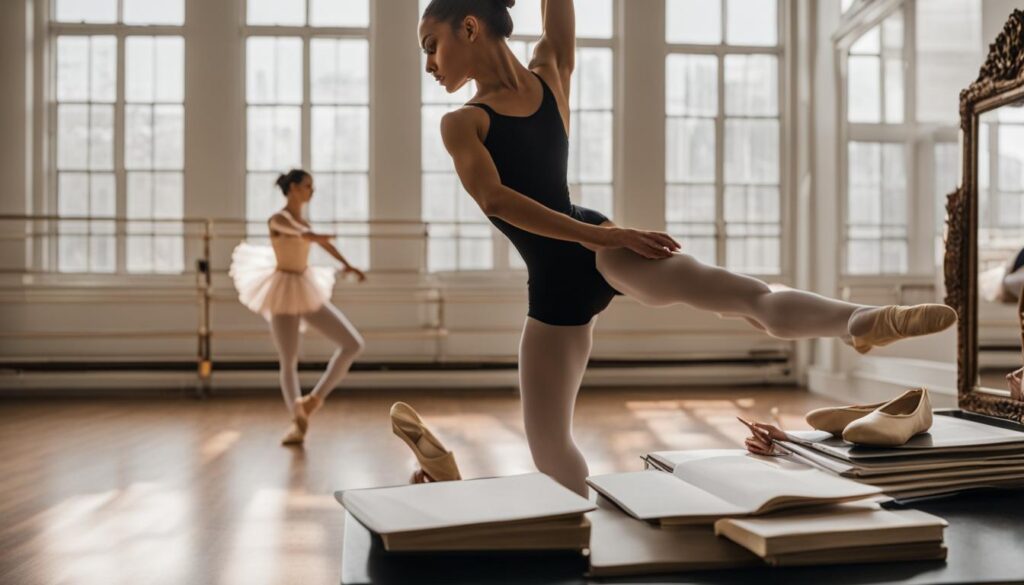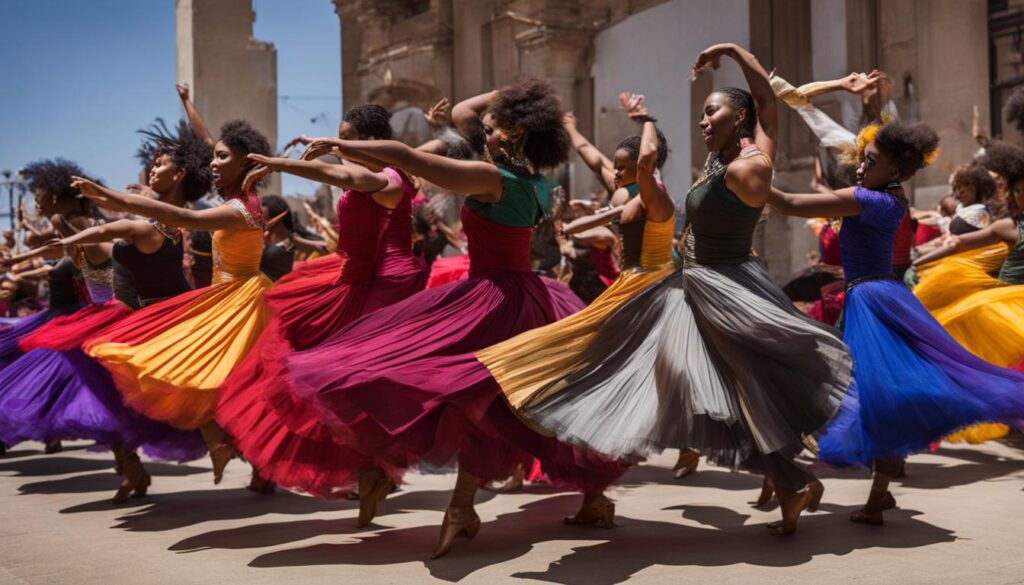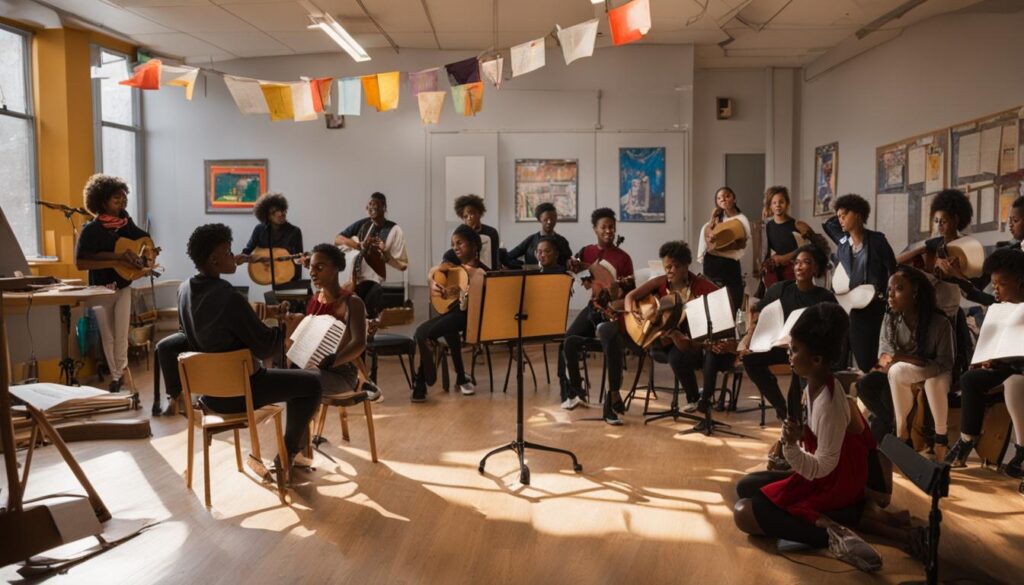If you love performing and are interested in a career in arts education, becoming a performing arts teacher might be the perfect path for you. To become a performing arts teacher, you will need an academic degree and teaching certification. Most states offer endorsements in music, drama, and dance, which are the three main performance disciplines. It is important to have a strong foundation in your chosen discipline, as well as training in teaching methods and classroom management. Additionally, gaining experience through fieldwork and student teaching is crucial to becoming a successful performing arts teacher.
How to Become a Performing Arts Teacher
- Obtain an academic degree in your chosen performing arts discipline.
- Complete an educator preparation program to gain teaching skills.
- Seek endorsements in music, drama, or dance, depending on your area of interest.
- Gain experience through fieldwork and student teaching.
- Stay updated on teaching methods and classroom management techniques.
Steps to Become a Performing Arts Teacher
If you have a passion for the performing arts and dream of inspiring future generations through education, becoming a performing arts teacher may be the perfect career path for you. Here are the essential steps to follow in order to become a successful performing arts teacher:
- Earn an Academic Degree: Begin by obtaining an academic degree in your chosen performing arts discipline, such as theater, music, or dance. This will provide you with a strong foundation of knowledge and skills in your area of interest.
- Complete an Educator Preparation Program: After earning your degree, it’s important to gain the necessary teaching skills through an educator preparation program. This program will equip you with the knowledge and techniques needed to effectively teach performing arts. You will receive training in teaching methods, classroom management, and educational psychology.
- Obtain Teaching Certification: In order to teach in schools, you will need to obtain teaching certification. This typically involves passing the required exams and meeting any additional state-specific requirements. Certification ensures that you have the necessary qualifications to lead a classroom and educate students in your chosen performing arts discipline.
- Gain Experience through Fieldwork and Student Teaching: Throughout your journey to becoming a performing arts teacher, gaining practical experience is vital. Engage in fieldwork opportunities, where you can observe and learn from experienced teachers. Additionally, participate in student teaching programs to put your skills into practice under the guidance of a mentor.
Gaining experience not only enhances your teaching abilities but also allows you to develop your own unique teaching style and establish a network of contacts within the performing arts education community.


By following these steps, you can set yourself on the path to becoming a qualified and successful performing arts teacher. The combination of academic knowledge, teaching skills, certification, and practical experience will equip you to inspire and educate future performers, helping them unlock their artistic potential.
Qualifications for a Performing Arts Teacher
To become a performing arts teacher, you will need to meet certain qualifications. First and foremost, earning an academic degree in your chosen performing arts discipline is essential. This degree will provide you with a solid foundation in your area of expertise and help you develop the necessary skills to teach the subject effectively.
Completing an educator preparation program is another crucial step in becoming a qualified performing arts teacher. This program will equip you with the knowledge and techniques needed to manage a classroom, develop lesson plans, and engage students in the learning process.
In many states, teachers are also required to obtain certification in their specific performing arts discipline. Whether it’s music, drama, or dance, this certification demonstrates your proficiency in the subject area and ensures that you meet the standards set by your state’s education board.
Gaining experience in your chosen performing arts discipline is highly beneficial for aspiring teachers. Whether through professional performances, internships, or community involvement, practical experience helps you deepen your understanding of the art form and provides valuable insights that you can share with your students.
Training in teaching methods and classroom management is also crucial for performing arts teachers. Understanding how to effectively engage students, create a supportive learning environment, and adapt your teaching strategies to individual needs will contribute to your success in the classroom.
Furthermore, some states may require performing arts teachers to hold a specific arts education certification or credential. These additional certifications demonstrate your commitment to the field and can enhance your qualifications as an arts educator.
Overall, the qualifications for a performing arts teacher include earning an academic degree, completing an educator preparation program, obtaining discipline-specific certification, gaining experience in the art form, and having training in teaching methods and classroom management. By meeting these qualifications, you can position yourself as a competent and qualified performing arts teacher.


Performing Arts Teacher Training
Training to become a performing arts teacher involves a combination of academic coursework and practical experience. Aspiring teachers will need to complete a degree program in their chosen performing arts discipline, which will provide them with the necessary knowledge and skills.
One important aspect of performing arts teacher training is completing an educator preparation program. This program includes coursework in teaching methods and classroom management, ensuring that aspiring teachers are prepared to effectively engage and educate their students.
Gaining practical experience through fieldwork and student teaching is also a crucial part of the training process. This hands-on experience allows aspiring teachers to apply their knowledge in real-world classroom settings, learning how to create engaging lesson plans, manage a classroom, and assess student progress.
After completing their degree and educator preparation program, individuals interested in becoming a certified performing arts teacher will need to pass the required exams and fulfill any additional state-specific requirements. This certification validates their proficiency in teaching performing arts and ensures they are well-equipped to meet the needs of their future students.
Performing arts teacher training encompasses not only theoretical knowledge but also practical skills. It is a comprehensive process that prepares individuals to inspire and educate students in their chosen performing arts discipline.
Through a combination of academic coursework, educator preparation programs, and practical experience, aspiring teachers can pursue their passion for the performing arts and become certified performing arts teachers.
Career Path of a Performing Arts Teacher
A career in performing arts education can be incredibly fulfilling and offers a wide range of opportunities for growth and advancement. As a performing arts teacher, you have the chance to make a lasting impact on the lives of your students while sharing your passion for the arts.
As a performing arts teacher, you may find employment in public or private schools, colleges, or universities. Your role may involve teaching various performing arts disciplines, including theater, music, or dance. You have the opportunity to inspire and guide students as they explore their creative potential in these disciplines.
Beyond teaching, there are other exciting avenues available in the field of performing arts education. For example, you might have the chance to direct performances, where you can bring your artistic vision to life and showcase the talent of your students. Additionally, you might have the opportunity to design sets and costumes, creating immersive and visually stunning productions.
Another aspect of a performing arts teaching career is the chance to lead theater games and activities. These activities not only enhance students’ artistic skills but also promote teamwork, problem-solving, and communication – valuable life skills that extend beyond the stage.
With experience and additional education, you can progress into leadership roles within the performing arts education field. This may include becoming a department chair or curriculum coordinator, where you can shape the direction and quality of performing arts programs in your institution.
A career in performing arts education provides the opportunity to ignite creativity, foster self-expression, and inspire the next generation of performers. By following your passion and becoming a theater teacher or performing arts educator, you can contribute to the vibrant and transformative world of performing arts education.
- Opportunities to work in public or private schools, colleges, or universities
- Teaching various performing arts disciplines, such as theater, music, or dance
- Directing performances and showcasing student talent
- Designing sets and costumes for visually stunning productions
- Leading theater games and activities to promote teamwork and communication skills
- Progressing into leadership roles, such as department chair or curriculum coordinator
- Inspiring the next generation of performers and fostering creativity
Conclusion
Becoming a successful performing arts teacher requires a combination of passion, education, and experience. By meeting the necessary qualifications and following the steps outlined in this guide, you can embark on a rewarding career in performing arts education.
To start your journey, it is important to earn an academic degree in your chosen performing arts discipline and complete an educator preparation program. These steps will equip you with the knowledge and teaching skills necessary to excel in the classroom.
Furthermore, gaining practical experience through fieldwork and student teaching is invaluable. It allows you to apply your skills in real-world scenarios and develop a strong foundation as a performer and educator.
With dedication and a love for the arts, you can make a lasting impact on your students’ lives as a performing arts teacher. Embrace the opportunities for growth and advancement in this fulfilling career, and inspire the next generation of performers to follow their dreams.
FAQ
How do I become a performing arts teacher?
To become a performing arts teacher, you will need to earn an academic degree in your chosen performing arts discipline and complete an educator preparation program. Additionally, obtaining teaching certification in your specific discipline may be required.
What are the steps to become a performing arts teacher?
The steps to become a performing arts teacher involve earning an academic degree in your chosen performing arts discipline, completing an educator preparation program, and obtaining teaching certification by passing the required exams and fulfilling any additional state-specific requirements. Gaining experience through fieldwork and student teaching is also crucial.
What qualifications do I need to become a performing arts teacher?
Qualifications for becoming a performing arts teacher typically include earning an academic degree in your chosen performing arts discipline, completing an educator preparation program, and obtaining teaching certification. Some states may also require specific arts education certification or credentials.
What is involved in performing arts teacher training?
Performing arts teacher training involves a combination of academic coursework and practical experience. You will need to complete a degree program in your chosen performing arts discipline, an educator preparation program that covers teaching methods and classroom management, and gain practical experience through fieldwork and student teaching.
What is the career path of a performing arts teacher?
A career as a performing arts teacher can involve working in public or private schools, colleges, or universities. You may have the opportunity to teach various performing arts disciplines, direct performances, design sets and costumes, and lead theater games and activities. With experience and additional education, you can pursue leadership roles such as department chair or curriculum coordinator.

